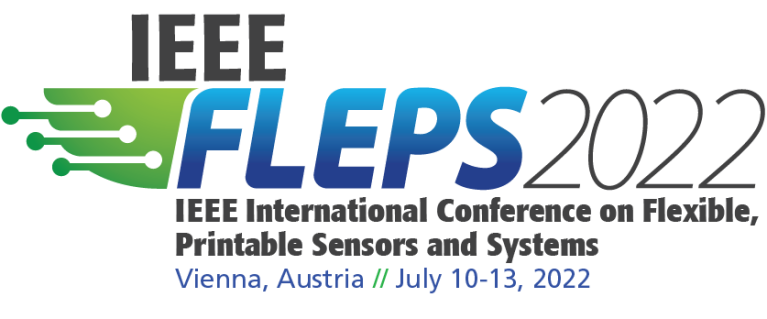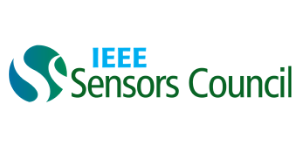Track 1: Emerging Materials
Ultra-high conductivity Sepia melanin ink films for environmentally benign electronics
Melanins (from the Greek μέλας, mélas, black) are bio-pigments ubiquitous in flora and fauna. In the melanin family, eumelanin is an insoluble brown–black type, found in vertebrates and invertebrates alike, among which Sepia (cuttlefish) is noteworthy. Sepia melanin is a type of bio-sourced eumelanin that can readily be extracted from the ink sac of cuttlefish. Eumelanin features broadband optical
TRACK 2: ADVANCED MANUFACTURING OF PRINTED AND FLEXIBLE ELECTRONICS
Artificial Senses Technology
Artificial senses refer to the emulation of human’s basic senses and assimilate them to functional devices and systems to help us understand and perceive the world around us. This research topic of artificial senses is transdisciplinary and lies at the confluence of materials science, bioengineering, medical sciences, electrical engineering, and computer science. Some use cases, including enhanced
TRACK 3: PHYSICAL SENSORS AND SMART SYSTEMS
Recent Advances of Sensor Structures Embedded in Organic Coatings on Metallic Substrates.
Embedded sensors provide an attractive option for implementing cost-effective monitoring capabilities for industrial applications where conventional discrete sensors are not well suited. Recently devised technologies using printed sensor structures embedded within organic coating on conductive substrates for industrial applications and harsh environments are presented. These include capacitive tou
TRACK 4: BIO- AND CHEMICAL SENSORS
Conjugated Polymer based Electronics for Diagnostics in Physiological Media
1Organic Bioelectronics Lab, Biological and Environmental Science and Engineering Division, King Abdullah University
Conjugated polymers provide a unique toolbox for establishing electrical communication with biological systems. I will show how modulating the chemistry of these materials can lead to interfaces that maximize interactions with biological systems while maintaining electronic trans
TRACK 5: ENERGY HARVESTING AND STORAGE
Wearable Energy Harvesting from the Human Body toward Personalized Healthcare
Electronic skin (e-skin) is expected to play a crucial role in the next generation of robotics and medical devices. However, existing e-skin-based sensing platforms primarily focus on monitoring physical parameters and rely on the power from the batteries or near field communication, which significantly hinders their broad use and sustainability toward continuous wireless sensing. Here I will intr
TRACK 6: GREEN AND LOW-POWER ELECTRONICS
What Is a Sustainable Use of ICT?
Purchasing every year a new mobile ICT device got something normal in our modern society – and few people realize that the production of new ICT devices equals to high environmental impacts. Several studies showed in the recent past, that this development is unsustainable. In the same time, there have been also studies showing the opportunities related to the development of ICT – including the inc
TRACK 7: HYBRID INTEGRATED SYSTEMS, THIN CHIPS AND PACKAGING
Fully printed CMOS Integrated Circuits: a key block towards pervasive smart electronics systems
Billions of electronic objects are expected to be distributed worldwide in the upcoming years according to the framework of pervasive electronics and the concepts of IoT, distributed healthcare and connected environments. Printed electronics has gained its place as a candidate for succeeding in the challenge of consolidating a complete technology that enables sustainable production and end-of-life
TRACK 8: RELIABILITY, SIMULATION AND MODELLING
Reliability Assessment of Flexible Wearable Electronics
In this presentation, I will discuss some of the uniaxial and multi-axial stretch and bend test techniques that are under development in our lab. I will present how these test techniques with their in-situ measurement capabilities can be adapted to complex surfaces associated with, for example, human body, aerospace and automotive structures, food and pharmaceutical items, energy harvesting and st
TRACK 9: PRINTED SMART TAGS AND COMMUNICATION DEVICES
Flexible and Transparent Solutions for Sensing Electronics and Electromagnetics
Flexible substrates and methods of attaching components as a roll-to-roll process have made it
possible to implement fully flexible and conformable electronic devices. Wireless connectivity
together with wireless charging of battery enable such structures e.g. to be overmolded with
elastomers to provide hermetic seal. As an alternative to conventional flexible substrates such as
polyimide, nan
Track 10: Emerging APPLICATIONS
Soft and flexible bioelectronics for brain-machine interface
Large-scale brain mapping via brain-machine interface is important for deciphering neuron population dynamics, understanding and alleviating neurological disorders, and building advanced neuroprosthetics. Ultimately, brain mapping aims to simultaneously record activities from millions, if not billions, of neurons with single-cell resolution, millisecond temporal resolution and cell-type specificit














